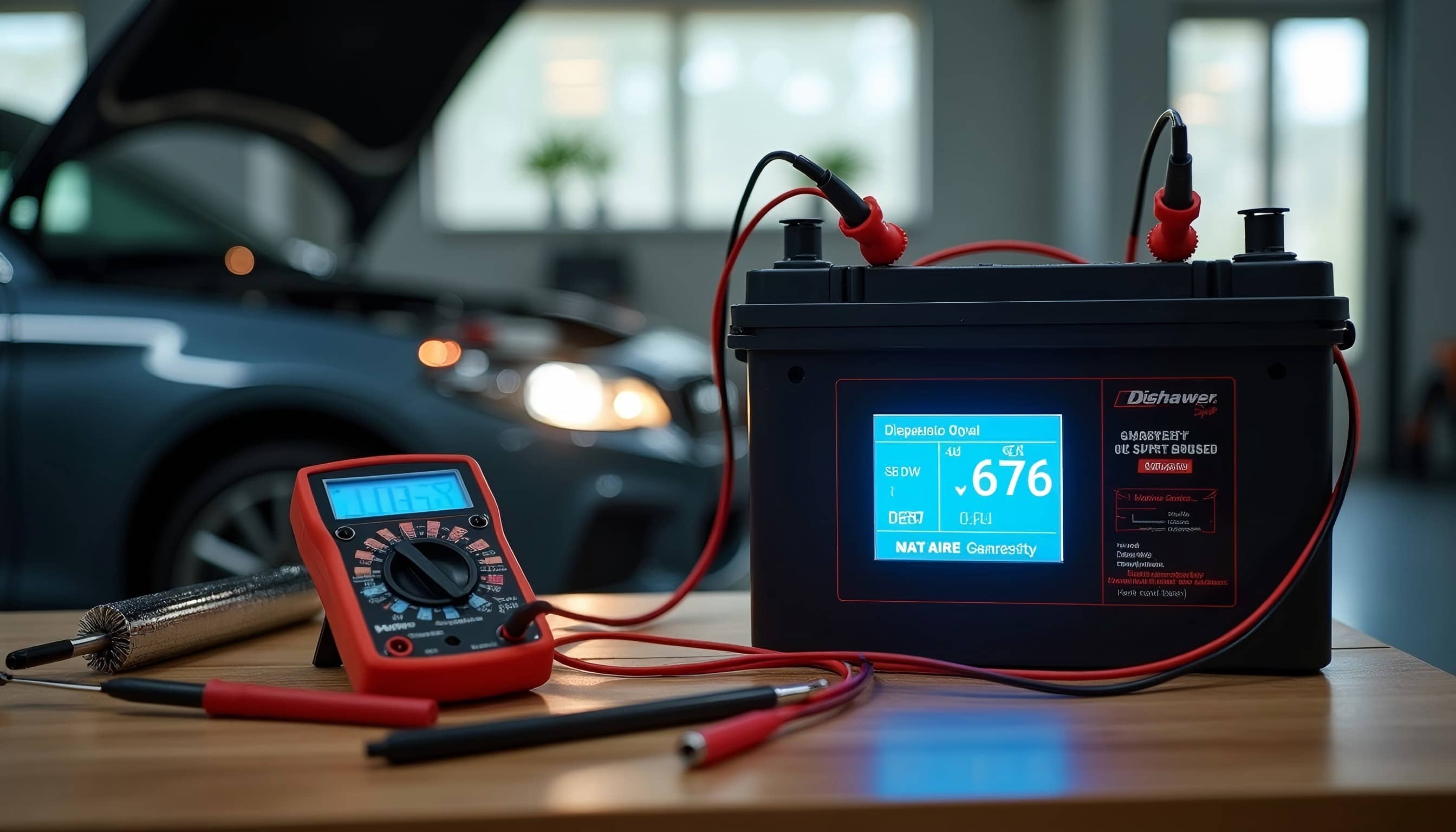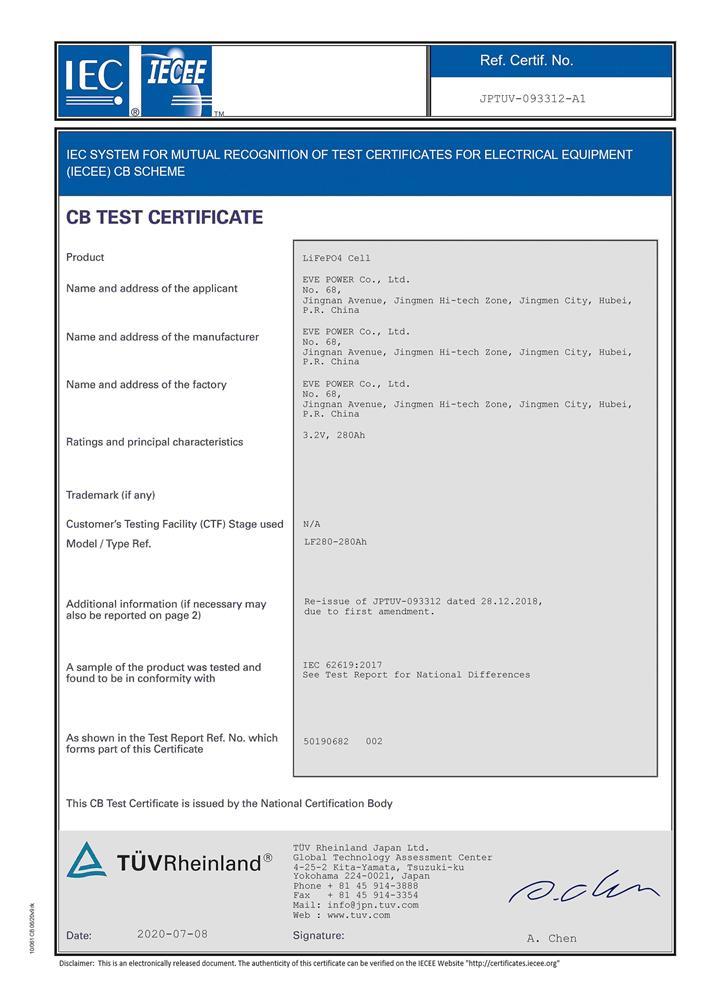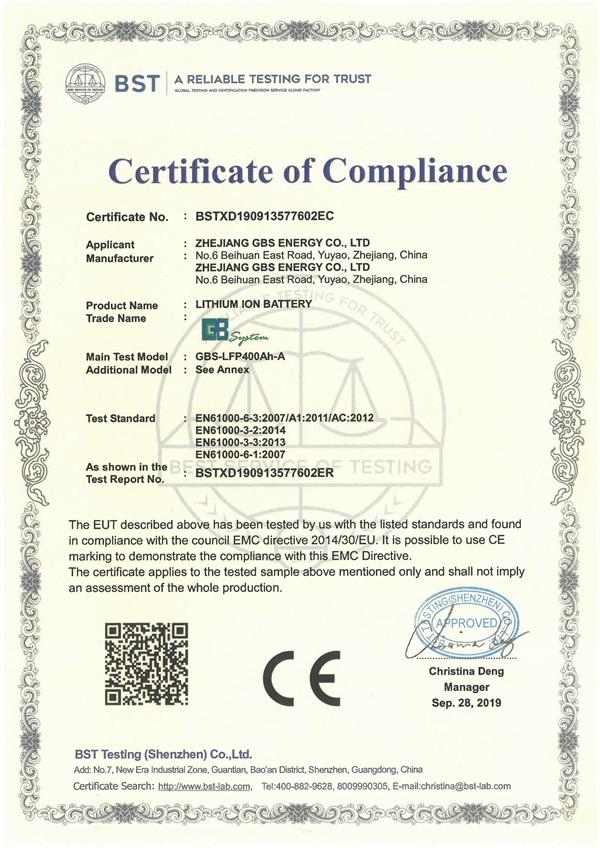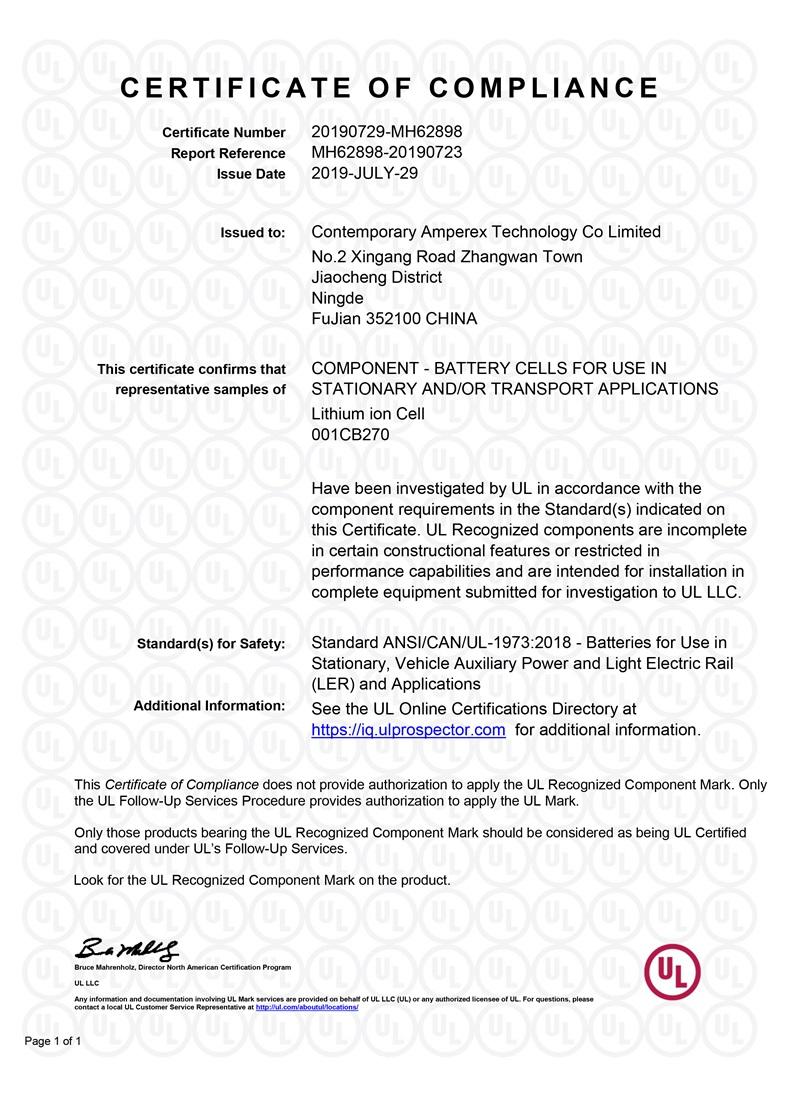Blog
How to Troubleshoot and Resolve Battery Discharge Warnings
2025-07-04 | Calvin

A battery discharge warning light flashing on your dashboard can turn a peaceful drive into a stressful situation. This warning signal might seem alarming but it is a vital early detection system that prevents complete battery failure and potential vehicle breakdowns. Battery-related problems cause more roadside assistance calls than you might expect. Studies show these issues rank among the top three reasons drivers need emergency help.
Your car might run perfectly fine when the battery discharge warning appears on the dashboard. This leaves many drivers confused about its true meaning. The warning could point to several problems - a failing alternator, loose connections, or a dying battery. In this piece, we'll walk you through every aspect of battery discharge warnings. You'll learn the immediate steps to take and ways to prevent future issues. This guide helps you understand, diagnose, and fix these problems whether you need help right now or want to stay prepared.
Battery Warning System Fundamentals
Modern vehicles come with multiple warning systems that help us track our battery's health and performance. These basic systems keep us informed about our vehicle's electrical health.
Warning Light Indicators
The battery warning light on our dashboard is our first defense against electrical system problems. The light will light up briefly during startup and then turn off in normal conditions . A well-functioning battery system maintains between 13 and 15 volts while the engine runs . The light staying on usually points to:
- Voltage dropping below 12.6 volts (critical threshold)
- Charging system malfunction
- Loose or corroded battery connections
- Alternator performance issues
Dashboard Messages
Vehicles built after 2012 give us more detailed information through dashboard messages . These digital displays show exact voltage readings and specific warnings about the battery's condition. These messages often come with other signs such as:
- Headlights that flicker within 60 seconds
- Electronic glitches when operating windows
- Computer memory affecting Bluetooth connections
- Changes in engine performance during startup
Battery Management Systems
The Battery Management System (BMS) is the most advanced battery monitoring technology. This system gives us complete oversight of our battery pack through multiple functions :
- Continuous Monitoring: Tracks voltage, current, and temperature
- Protection Features: Prevents operation outside safe limits
- Performance Optimization: Balances cells and manages thermal conditions
- Status Reporting: Communicates with external monitoring devices
The BMS works best in a "Goldilocks region" (typically 30-35°C) . This system is vital for high-voltage systems that range from less than 100V to 800V with pack currents reaching 300A or more .
The system is especially important in modern vehicles. It prevents dangerous conditions like thermal runaway and protects against over-charging and deep discharge . The BMS actively tracks the battery's State of Charge (SOC), State of Health (SOH), and other parameters to ensure safe and efficient operation .
Immediate Response Procedures
A battery discharge warning requires quick action that can mean the difference between a minor setback and a serious problem. Here are the significant steps you need to take to handle this situation safely and make it work.
Safety Precautions
Safety comes first when dealing with any battery-related work. You need proper personal protective equipment (PPE) that includes:
- ANSI Z-87.1 splash-proof safety goggles
- Acid-proof rubber or neoprene gloves
- Acid-resistant clothing or apron
- Acid-resistant safety footwear
Batteries contain hydrogen and oxygen that could ignite with a spark, so stay away from open flames and metallic objects . Vehicle battery injuries are serious - 32% come from battery explosions .
Original Assessment Steps
Here's what you should do at the time you see a battery discharge warning:
-
Verify Warning Status
- Check if the light stays on continuously
- Monitor for additional warning signs
- Note any unusual vehicle behavior
-
Reduce Power Consumption
- Turn off all non-essential electrical components
- Keep only headlights on if needed
- Disconnect any charging devices
-
Monitor Critical Systems
- Watch for signs of overheating
- Check power steering functionality
- Observe any changes in vehicle performance
Emergency Measures
Critical battery situations need immediate action. Keep conventional batteries at least 50 feet away from flammable materials . If acid contact occurs:
- For eye exposure: Flush with drinkable liquid for at least 15 minutes and get medical help right away
- For skin contact: Neutralize with baking soda solution and rinse really well with clean water
- For ingestion: Drink lots of water or milk, followed by milk of magnesia, and seek immediate medical help
Never try to charge or drive a vehicle with suspected battery damage, especially in electric vehicles. Call emergency services immediately . Damaged batteries remain dangerous even after initial incidents, and some cases show reignition days after the original damage .
DIY Diagnostic Techniques
You can save time and money by testing your vehicle's battery at home. This helps you spot problems before they get serious. Let's look at some diagnostic techniques you can use in your garage.
Basic Testing Tools
You need these tools to test your battery properly:
- Digital multimeter (capable of reading DC voltage)
- Battery load tester (for testing Cold Cranking Amps)
- Battery cleaning supplies
- Safety equipment (gloves and eye protection)
- Simple hand tools for terminal connections
Visual Inspection Methods
Your vehicle should be off for 10-15 minutes before you start any tests . This gives you accurate readings. Here's what you need to check:
- Terminal Cleanliness: Clean terminals give you accurate readings. Even a tiny bit of white Vaseline can throw off your measurements
- Corrosion Signs: Watch for greenish-white buildup around terminals
- Case Condition: Look for cracks, bulging, or any fluid leaks
- Electrolyte Levels: Check fluid levels in batteries that let you do this
Simple Measurements
The timing of voltage measurements matters a lot. A healthy battery shows these voltage readings:
- Resting Voltage: You should see about 12.6 volts at full charge
- Warning Zone: Readings below 12.0 volts show possible problems
- Charging Voltage: Your alternator works right if you see 14.4 volts with the engine running
Two key parameters matter for detailed testing:
State of Charge (SOC): This shows the difference between a full charge and current charge level . You calculate this as a percentage of remaining charge versus maximum possible charge.
State of Health (SOH): This tells you how your battery compares to a new one, factoring in cell aging . It helps predict when you might need a replacement.
Modern cars need extra attention during testing. Their systems often draw power for 30-60 minutes after shutdown . Follow these steps for good results:
- Wait 15 minutes after turning off the engine
- Turn off all electrical systems
- Clean connection points well
- Use the right testing equipment
Temperature affects your readings by a lot. Battery performance changes in extreme weather. Cold weather (below 15 degrees) reduces resting capacity, while hot weather makes batteries discharge faster .
Battery Health Assessment
Battery health assessment needs more sophisticated testing than simple voltage readings. A complete health check requires multiple testing methods to get the full picture of battery condition.
Capacity Testing
Battery capacity tests focus on measuring actual amp-hour capacity against the manufacturer's specifications. A properly working battery maintains voltage above 9.6 volts during the original starting phase . Our capacity measurements look at several key parameters:
- Resting Voltage: 12.4V indicates 75% charge level
- Operating Range: 14.1V to 14.6V during charging
- Critical Threshold: Below 12.0V signals potential failure
Load Testing Procedures
Our systematic load testing approach delivers accurate results. The process starts by connecting a load tester or multimeter to the battery terminals. These steps ensure accurate results:
- Set multimeter to DC voltage mode (minimum 20V range)
- Run headlights for 2 minutes to remove surface charge
- Connect probes to battery terminals
- Monitor voltage during cranking
- Record minimum voltage reading
Healthy batteries maintain at least 9.6 volts during the cranking phase . Voltage drops below this threshold usually require further investigation or replacement.
Chemical Analysis
Detailed analysis requires sophisticated chemical testing methods. Modern labs employ several advanced techniques:
Gas Chromatography/Mass Spectrometer Analysis (GC-MS) helps us measure chemical components down to parts per trillion . This precision lets us review lithium quantities in modern batteries.
Thermogravimetric Analysis (TGA) helps assess:
- Oxidative stability
- Thermal stability
- Volatile content
- Material composition
Temperature affects battery performance by a lot. Engine compartments can reach 140°F in extreme conditions, which causes electrolyte evaporation and faster discharge rates . Battery's resting capacity drops when exposed to temperatures below 15 degrees for long periods .
Differential Scanning Calorimetry (DSC) measures critical parameters including:
- Melting point determination
- Heat capacity evaluation
- Thermal conductivity assessment
- Phase change temperatures
These advanced testing methods identify potential issues before battery discharge warnings or complete failure occurs. Tests follow industry standards like ASTM D934 and IEC 62660 to ensure reliable and consistent results.
Environmental Impact Analysis
Environmental factors shape how batteries perform and can trigger battery discharge warnings. Let's look at the connection between a battery's health and its environment.
Temperature Effects
Temperature affects a battery's performance and life span. The best operating temperature for most batteries ranges between 70°F and 80°F . The temperature changes create several effects:
- Above 122°F: Capacity increases by 12% but shortens lifespan
- At Freezing (32°F): Capacity drops by 20%
- At -22°F: Capacity plummets by 50%
- At 140°F: The internal engine compartment temperature damages the battery
The battery's chemical reactions become unstable in extreme heat. High temperatures speed up internal reactions and lead to faster self-discharge rates. The battery loses about 10% charge per month at 104°F compared to 2% at 46°F .
Weather Conditions
Summer heat damages batteries more than winter cold . Hot weather causes:
- Quick evaporation of the battery's liquid electrolyte
- Faster corrosion on battery terminals
- Higher overcharging risk from voltage regulator interference
Cold weather makes the electrolyte fluid thick, much like oil in winter. The battery works harder and might trigger a discharge warning while the car runs .
Storage Environment
The right storage conditions extend a battery's life. The best storage environment keeps an annual average temperature of 15°C (59°F) . Here are the storage guidelines:
-
Location Selection:
- Pick a dry, climate-controlled space
- Keep away from direct sunlight
- Ensure proper ventilation
-
Humidity Control:
- Keep humidity low to stop condensation
- Watch for moisture buildup
- Guard against leakage currents between terminals
Bad storage leads to deep discharge that permanently damages batteries . The voltage should stay between 12.7V and 12.8V during storage. Check every two months to make sure it doesn't fall below 12.5V .
Temperature-controlled warehouses between 40°F to 60°F give the best results for long-term storage . This range minimizes self-discharge and prevents extreme temperature effects that might trigger early battery discharge warnings.
Vehicle-Specific Considerations
Battery selection for our vehicle goes beyond just finding the right fit. We found that there was a direct connection between modern vehicles' specific requirements and how we deal with battery discharge warnings and replacements.
Manufacturer Guidelines
The manufacturer's specific requirements play a vital role in battery replacement. The Battery Council International (BCI) standardizes battery sizes and terminal position labels. These specifications are a great way to get the right match . A BCI number of 35 shows top terminals that work well with most Japanese brands like Honda, Nissan, and Toyota .
Warranty details matter just as much. Most manufacturers provide:
- Free replacement period coverage
- Prorated warranty period
- Coverage limitations based on usage patterns
Battery neglect signs like low water levels or poor installation can void the warranty . Batteries lose their strength over time, even in storage. The best performance comes from batteries less than 6 months old .
Model-Specific Issues
Each vehicle needs a specific battery type. The wrong choice leads to serious problems. Many modern vehicles use Absorbed Glass Mat (AGM) batteries. These cost 40-100% more than regular batteries . AGM batteries are vital for vehicles that have:
- Fuel-saving stop/start systems
- Advanced electronic safety features
- Multiple power outlets for mobile electronics
| Battery Type | Cost Factor | Best For |
|---|---|---|
| Traditional Lead-Acid | Base cost | Basic electrical needs |
| AGM | 40-100% higher | Advanced systems |
Newer vehicles with AGM batteries should never be downgraded to traditional ones. This leads to power supply problems for key vehicle functions .
Technical Bulletins
Technical Service Bulletins (TSBs) help us identify specific battery-related issues. The 2021 Ford Mustang Mach-E presents an interesting case. Vehicles built before February 3, 2021, had 12-volt battery discharge problems during high-voltage charging . The fix required:
- Reprogramming the powertrain control module
- Updating various system modules
- Following specific charging procedures
The National Highway Traffic Administration (NHTSA) website now offers these bulletins free of charge . Battery discharge warnings often lead us to check these bulletins first because they provide manufacturer-approved solutions .
Vehicle type determines proper battery maintenance needs. Some vehicles allow AGM battery replacement with traditional flooded ones in hot climates. A mechanic's advice helps avoid problems. This careful approach reduces the risk of joining the 32% of vehicle battery injuries that come from improper handling or installation .
Cost-Effective Solutions
Smart financial decisions about battery issues need a good look at both current costs and future benefits. We found that there was a way to save money through proper battery maintenance while keeping vehicles running reliably.
Repair vs Replace Analysis
Battery discharge warnings need a thorough review of repair versus replacement costs. Our data shows that replacement makes more sense when repair costs go beyond 50% of a new battery's price . A non-working battery's salvage value plays a big role in this choice - it still holds recycling value .
This framework helps make the repair-or-replace decision:
- Calculate current battery's salvage value
- Compare repair costs against new battery prices
- Factor in labor costs
- Think about warranty coverage
To name just one example, see a $2,000 repair that adds only $400 to the vehicle's value. This is a big deal as it means that we lose $1,600 . Numbers help us make smart choices instead of emotional ones.
Budget-Friendly Options
We found several affordable battery options that deliver quality. Here are some value-focused choices:
- Walmart ValuePower: Available for $48.88 after core charge
- Advanced Auto Parts: Special online ordering discounts of $50 off $125 purchases
- Local Parts Store Used Batteries: Range from $30-40 with testing included
Research shows 90% of buyers would pay extra for a battery health certificate , and about half would spend an additional $500 for this certification . Budget options often deliver excellent value with proper maintenance.
Long-Term Value Assessment
Total ownership costs depend on several key factors. Battery recycling will create a $6 billion profit pool by 2040 . This makes sustainable options more valuable each year.
Battery value depends on warranty structure:
- Free replacement period
- Prorated warranty duration
- Coverage limitations
AGM batteries cost 40-100% more than regular ones but offer better value through:
- Extended lifespan
- Better performance with modern vehicle systems
- Enhanced reliability in extreme conditions
Car batteries have a recycling success rate of 90% . This makes them one of the most recycled automotive products. New battery purchases include a core charge that comes back to you when returning the old battery .
Batteries with the longest free-replacement period offer the best value. A "24/84" warranty code means 24 months of free replacement plus 84 months of prorated coverage . Reimbursement values drop faster once the prorated period starts.
Long-Term Prevention Strategies
A proactive approach beyond simple maintenance helps prevent battery discharge warnings. Research and testing show that the right prevention strategies can substantially extend battery life and reduce unexpected failures.
Usage Optimization
Battery usage patterns make a real difference in longevity. Lower C-rate discharge puts less strain on the battery compared to high-rate discharge (1.5C) . Slower rates (C/8) result in less internal resistance buildup and better capacity retention .
Temperature management is a vital part of optimization strategy. Research indicates that:
- Extreme cold causes electrode contraction, preventing ion extraction
- Low temperatures decrease electrolyte conductivity
- High temperatures aid ion movement
- Excessive heat can permanently damage electrode structures
Partial depth of discharge (DoD) affects battery life substantially. A 100% DoD equals a full cycle, but limiting the DoD improves cycle life dramatically . This is similar to breathing - we don't use full lung capacity for normal breathing, just as batteries don't need full discharge for optimal performance .
Regular Maintenance Schedule
The complete maintenance schedule has:
-
Weekly Checks
- Drive the vehicle for at least 30 minutes
- Verify all accessories are properly switched off
- Monitor dashboard warning indicators
-
Monthly Inspections
- Clean battery terminals and connections
- Check for secure mounting
- Verify voltage readings (should be 12.7V or higher)
-
Quarterly Assessment
- Professional load testing
- Inspection of charging system
- Verification of alternator output
Vehicles stored in garages benefit from trickle chargers that maintain optimal charge levels . This prevents overcharging while compensating for natural discharge rates.
Early Warning Detection
Sophisticated early warning detection systems provide advance notice of potential failures. Modern detection technology offers 2 to 30 minutes of warning before a thermal runaway event .
Key indicators in our monitoring approach include:
Physical Signs:
- Unusual noises during startup
- Dashboard light dimming
- Accessory malfunction
- Clicking sounds during ignition
Electronic Monitoring: Advanced off-gas detection systems identify:
- Volatile organic compounds (VOCs)
- Composition changes in battery gasses
- Thermal anomalies
- Cell imbalances
The Li-ion Tamer system provides complete protection through:
- Earliest warning detection capabilities
- Increased system visibility
- Flexible monitoring solutions
- Calibration-free operation
Temperature optimization is a vital prevention strategy. Batteries perform best within the "Goldilocks zone" of 10°C to 35°C (50°F to 95°F) . Performance changes outside this range are notable:
| Temperature Range | Effect on Battery |
|---|---|
| Below 10°C | Reduced efficiency, slower charging |
| 10°C - 35°C | Optimal performance window |
| Above 35°C | Increased wear, faster degradation |
Electric vehicle owners should adopt these specific driving habits:
- Avoid constant high speeds above 70mph
- Use cruise control for steady power draw
- Minimize aggressive acceleration and braking
- Optimize climate control usage
These strategies have reduced unexpected battery failures and extended overall battery life substantially. Monitoring systems now give enough warning time to safely park and exit the vehicle if needed , addressing one of the most critical safety concerns in modern vehicles.
Conclusion
Battery discharge warnings are vital signs that help prevent expensive breakdowns and keep vehicles reliable. We've discovered that good battery management needs technical knowledge, regular maintenance, and understanding of environmental factors.
Our research points to several factors that make battery management work well:
- How to read warning systems and their signs
- What the manufacturer guidelines say
- When to schedule regular maintenance
- How weather affects battery life
- Which economical solutions fit your vehicle's needs
Today's vehicles just need smarter ways to manage batteries. AGM batteries, better monitoring systems, and the right maintenance schedules help batteries last longer and prevent sudden failures. The right temperature, proper storage, and regular testing play a significant role in stopping battery problems before they start.
This knowledge helps us handle battery discharge warnings better and stop them from happening again. Note that taking care of your battery saves money and keeps you safe while driving in any condition.
FAQs
What steps can be taken to address a battery discharge warning in a vehicle?
To address a battery discharge warning, you can start by turning on the vehicle or shutting off any non-essential systems such as the radio, lights, and climate control. If these steps do not resolve the warning, it may be necessary to replace the battery or investigate further to find the underlying cause of the issue.
How can you test a car battery for discharge issues?
To test for battery discharge, follow these steps:
- Measure the battery voltage.
- Disconnect the negative battery cable.
- Connect an ammeter to the battery.
- Allow the car to enter "sleep" mode.
- Observe the ammeter reading to determine if there is a parasitic draw.
- Identify the source of the draw if present.
What are some methods to fix battery discharging on an Android device?
To reduce battery discharge on an Android device, consider the following adjustments:
- Update apps only when opened.
- Disable location services when the screen is off.
- Restrict background app activity unless battery optimization is disabled.
- Turn off hands-free commands like "OK Google."
- Enable Dark theme to save battery life.
- Delay notifications to reduce wake-up signals.
How can battery discharge be monitored effectively?
Monitoring battery discharge effectively can be done by tracking the state of charge. A fully charged battery will show a 100.0% state of charge, while a fully discharged battery will show 0.0%.
Is it normal to receive a battery discharge warning when a car is in accessory mode, and what does it imply?
Receiving a battery discharge warning when your car is in accessory mode is typically a normal feature, especially in newer vehicle models like the Hyundai Venue. This warning is a precaution to prevent battery drain. It does not necessarily indicate a faulty battery, and it is generally safe to use the accessory mode for short periods, such as 10-15 minutes.
- Next:Batteries in Parallel vs Series: Which Battery Configuration is Better for Your Needs?
- Previous:Tesla Battery Types: A Simple Guide for Model S, 3, X, and Y
Contact Details
Lithium LiFePO4 Batteries and Lithium LiFePO4 Cells Supplier - LiFePO4 Battery Shop
Contact Person: Miss. Elena Wang
WhatsApp : +8615263269227
Skype : +8615263269227
WeChat :15263269227
Email : info@lifepo4batteryshop.com
All Products
- A123 Battery (5)
- Sinopoly Battery (7)
- GBS Battery (16)
- CALB Battery (22)
- Cylindrical Cell (3)
- Energy Storage System (0)
- Battery Management System (2)
- Sodium ion Battery Cell (3)
- Lithium Titanate Battery (16)
- Ternary Lithium Battery Cell (11)
- REPT Battery (8)
- BYD Battery (2)
- CATL Battery (14)
- Thunder Sky Winston Battery (21)
- EVE Battery (29)
- LiFePO4 Battery Cell (4)
Certification
Customer Reviews
- I have fond memories of our meeting in Shanghai with LiFePO4 Battery Shop Elena. Your company left a strong impression on me with its impressive growth and professionalism. We both value straightforwardness and honesty, which I believe are the most important qualities in any partnership. I am confident that we can build a successful collaboration based on these shared values. —— Robert from USA
- I've been working with LiFePO4 Battery Shop for years, and their reliability is unmatched. While other suppliers frequently change sales teams, LiFePO4 Battery Shop has consistently provided exceptional service with a stable team. Their commitment to quality and customer support truly sets them apart. —— Henry from Australia



